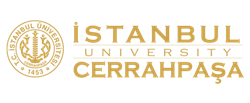Aim: The aim of this study was tosystematically evaluate the research associated with wound healing process inepisiotomy care.
Method: The search for this study wasconducted through the international databases of Cochrane, Science Direct,Medline, Medine Complete, CIHANL, Scopus, AcademicSearch Complete, ComplementaryIndex and ULAKBIM medical database among the National Databases between May 1and July 17, 2017. “Episiotomy care” and “episiotomy wound healing” were usedas key words during the search. A total of 23 publications compliant with theinclusion criteria were included in the study and were evaluated in terms ofcomparisons, restrictions, and results.
Results: Studies about episiotomy care wereevaluated under four headings such as the use of antiseptic solutions, use ofdry/wet and hot and cold applications, laser and light therapy, and the use ofaromatic oils and phytotherapy in episiotomy care. Among the 23 studiesincluded in this study, 17 were designed as experimental and 6 ashalf-experimental and a total of 2.408 puerperal women participated in thisstudy.
Conclusion: The results of this literaturereview revealed a limited number of research findings on the care of episiotomywounds and a necessity of performance of new studies on this subject wasestablished.
Cite this article as: Çobanoğlu, A. ve Şendir, M. (2019). Evidence-based practices in episiotomy care. FNJN Florence Nightingale Journal of Nursing, 27(1), 48-62




.png)
.png)